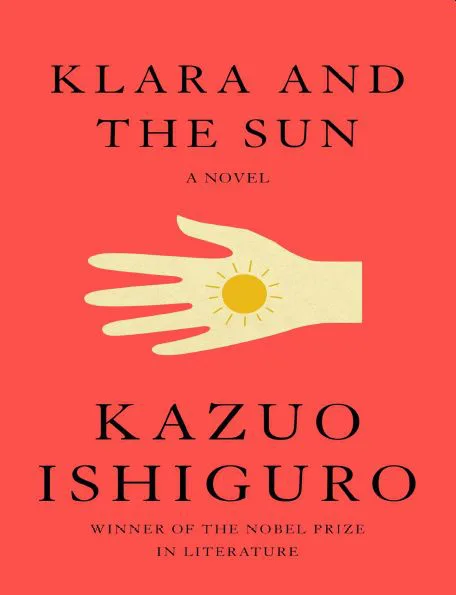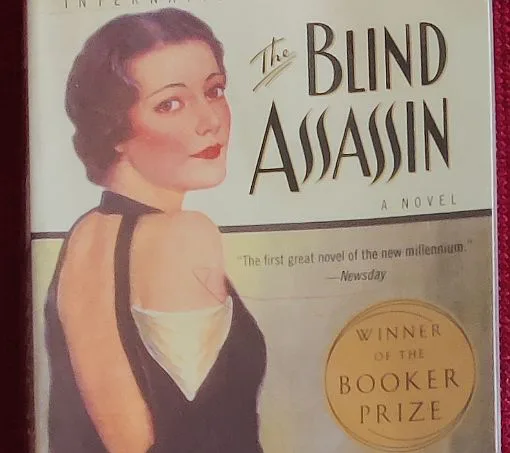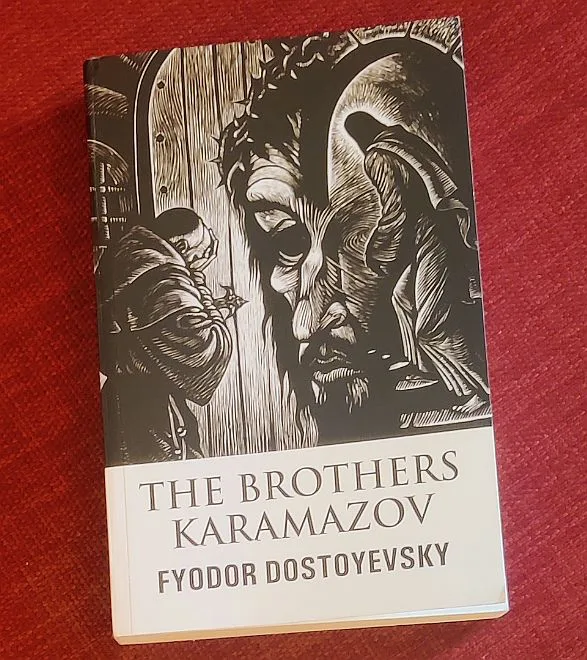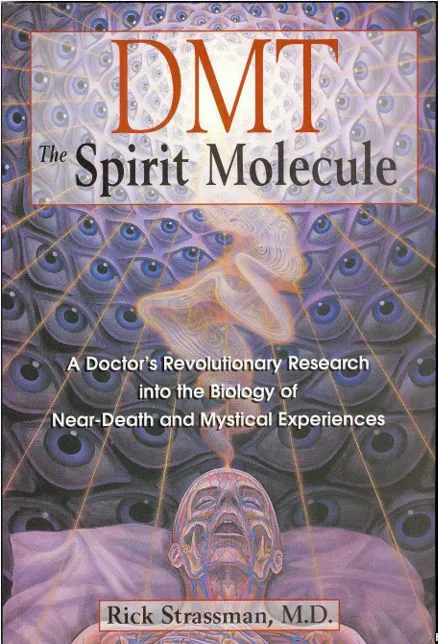
DMT: The Spirit Molecule is an engaging book written by Dr. Rick Strassman. It was first published in 2001.
In the book, the focus is on psychedelics, particularly DMT (Dimethyltryptamine). Dr. Strassman suggests that because DMT is present in our bodies, the pineal gland located in our brains might be where it originates. Hindus see it as the seventh chakra location, and Descartes thought it’s where the soul resides.
Although modern medicine remains uncertain about the gland’s function.
Research behind the book took almost five years. During the tenure, Dr. Strassman “administered approximately four hundred doses of DMT to sixty human volunteers”.
The author conducted this research at the University of New Mexico’s School of Medicine in Albuquerque. At that time, he held the position of tenured Associate Professor of Psychiatry.
The project concluded in 1995 because of challenges within and outside the research. However, Dr. Strassman remained hopeful about the controlled use of psychedelics.
Through this research, important biological and psychological information was collected based on volunteers’ personal encounters. Therefore, DMT: The Spirit Molecule reflects the emotional, psychological, and spiritual influence on participants following their ingestion of this compound.
Pineal Gland’s Significance and Spiritual Synthesis
The book starts with the location and function of Pineal gland. The gland situated between the two cerebral hemispheres secretes melatonin (involved in regulating the sleep-wake cycle) and Dimethyltryptamine a.k.a DMT (psychedelic compound that has been found in trace amounts in the human body).
Pineal gland also plays an important role in various physiological processes, including:
- regulation of reproductive hormones
- modulation of the immune system
- potential interactions with other neurotransmitters
In the book, Dr. Strassman proposes that pineal DMT enables profound psychedelic experiences. Many religious practices consider celibacy necessary for spiritual enlightenment, as sexual activity is believed to divert energy from spiritual development.
However, celibacy conflicts with reproduction and poses a dilemma between the continuity of the species and individual spiritual growth.
Practitioners of Tantra aim to reconcile both spiritual and sexual realms. They recognize that sexual excitement and orgasm can induce highly ecstatic states. Therefore, they combine sex and meditation to access heightened states of consciousness.
Dr. Strassman then suggests that deep meditation and intense sexual activity may stimulate pineal DMT release, resulting in intensified psychedelic effects.
Bridging Reproduction and Higher Consciousness
The author then proposes that reproduction and higher consciousness are tied by spirit or life-force.
Spirit enlivens us and interacts with our body. When spirit leaves, the body dies. Spirit generates unique fields through mental and physical activities. Stronger fields take longer to fade.
The concept of spirit in scientific discussions is quite challenging but Dr. Strassman says, it becomes difficult to ignore when the phenomena demands it.
He is fascinated with pineal gland’s role in the spirit’s life. Pineal gland and reincarnation beliefs share a forty-nine-day interval.
The Tibetan Book of the Dead states that it takes forty-nine days for the soul of the deceased to reincarnate. Astonishingly, this same forty-nine-day interval marks two significant events in human embryonic development — the appearance of the pineal gland and the differentiation of the fetus into male or female gender.
DMT, Pineal Gland, and Altered States
During near-death experiences, there is a profound shift in consciousness away from identification with the body. Dr. Strassman suggests pineal DMT facilitates the experience of non-embodied consciousness.
At the time of death, the pineal gland becomes highly active, producing a final burst of DMT due to various factors. As per the author, it is possible to suggest that the life-force exits the body through the pineal gland.
Therefore, if naturally occurring altered states of consciousness result from the high production of pineal DMT, then what would happen if there is no pineal gland? For instance, if someone lacks a pineal gland due to cancer or a stroke. Will they be able to access to conscious experiences that results from pineal DMT?
Dr. Strassman answers by saying that pineal gland is not the only region for DMT production. Lung, liver, blood, and eyes too possess the raw materials for DMT synthesis.
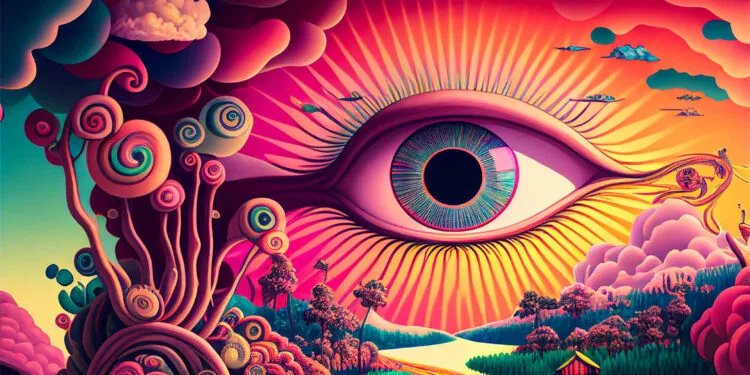
Exploring DMT Experiences
Part three and four of the six parts book talks about the research that was done on human participants.
Dr. Strassman performed research on sixty volunteers after obtaining federal approval for human-subject. He recorded and classified their encounters into three intriguing categories:
Personal Journeys: Volunteers in this category revealed that their experiences were intimately tied to their thoughts and emotions. The author observed that people here received what they “needed” than what they “desired”.
“Most of our volunteers more or less consciously hoped for a spiritual breakthrough with the aid of DMT—a final resolution to questions regarding why they were born, or a union with the Divine in which all conflict ended and an unshakeable certainty prevailed. However, DMT, as a true spirit molecule, gave our volunteers the trip they needed, rather than the one they wanted.” (p156.)
For some individuals, the experience served as a trigger for unearthing buried emotions. Thus, the shift in the mind-body state highlighted the connection between mental and physical healing.
Invisible experiences: Volunteers, here, experienced an apparent reality as in alternate world existing along with our common ecosphere.
They also encountered extraterrestrial entities and mentors. Very much like we see or read in science fiction today. However, the participants felt strong association with them. In fact, they felt that these entities were as real as anything else.
The author then questions about how we make sense of unusual experiences that occur when our minds are in altered states, in this case – under the influence of DMT.
If the experiences are a product of hallucination, then how do we approach and understand similar accounts of encounters with spiritual beings like angels, gods, or goddesses within established religious traditions?
Does it imply that there is a connection between extraordinary experiences occurring in altered states of consciousness and the spiritual narratives found in various religious beliefs?
Transpersonal experiences: It encompasses near-death and spiritual-mystical experiences. Dr. Strassman gives a passing reference to famous works of Raymond Moody’s Life After Life (1975), and Kenneth Ring’s Life at Death (1980).
Only two subjects in the research group experienced DMT induced near-death experiences. And both followed mystical culmination of the respective near-death experience.
Thus, the author concludes that when people venture further into near-death experiences, they reach a mystical state of understanding. This is where the true power of DMT lies.
Both the volunteers and Dr. Strassman saw the potential for life-changing transformations in these unexplored realms.
Insights from Psychedelic Journeys
After the intriguing conversations and interviews from the participants, Dr. Strassman revealed that volunteers experienced:
- a stronger sense of self,
- a newfound ease with the idea of mortality, and
- an amplified appreciation for life’s nuances.
Interestingly, a change in attitude towards indulgences was noted. For instances, some reported reduction in alcohol consumption. While others stated an increased sensitivity to the effects of psychedelic substances. Still there were some who became more receptive to their intuition. And most of them experienced intense love for everything – animate and inanimate objects.
Above all, their concept of reality itself seemed to undergo a transformation. Their long-held beliefs and viewpoints received an intense validation. And consequently, their convictions resonated more deeply than ever before.
Does that mean, DMT is responsible for resolving issues or delivering treatments?
Dr. Strassman said otherwise. All the volunteers were already well-adjusted individuals in their lives. In his epilogue, he did mention,
“I did my best to recruit research subjects with a background in meditation. They seemed more able to deal with the initial anxiety of the DMT rush and also helped me compare meditation and drug-induced states of mind.”
Also, DMT itself isn’t a magic remedy. It just amplified what was already within the folds of themselves, revealing facets they never knew existed.
The volunteers were provided with safe setting for participation. The broader and satisfied context of their lives played a role just as significant.
Thus, the book surfaces interconnectedness of the human psyche, powerful substances, and the intricate tapestry of individual beliefs and experiences.
Buddhist Influence in Shaping DMT Research
One of the interesting points in the research is Dr. Strassman’s exposure to Buddhism. A factor that exerted profound sway over his approach to the DMT investigations. Therefore, it could be possible that along with psychological effects, he focused on spiritual aspects.
He did face conflicts as the religious community disagreed with comparing Buddhist enlightenment to drug experiences.
Consequently, he shifted his approach to take volunteers’ experiences at face value. And so, considered the possibility of alternate realms of being.
Eventually, he speculated on how DMT might transport us to parallel universes. Also, questioned the evolutionary purpose of DMT in the brain.
He proposed conducting studies in natural settings to help individuals with psychological issues. In addition to enhance creativity and empathy through DMT use.
Dr. Strassman concluded by suggesting future research in directions that include studying the pineal gland’s role in:
- meditation
- near-death experiences
- dreams
In addition to exploring the effects of DMT on Cesarean-born infants and spontaneous psychedelic experiences.
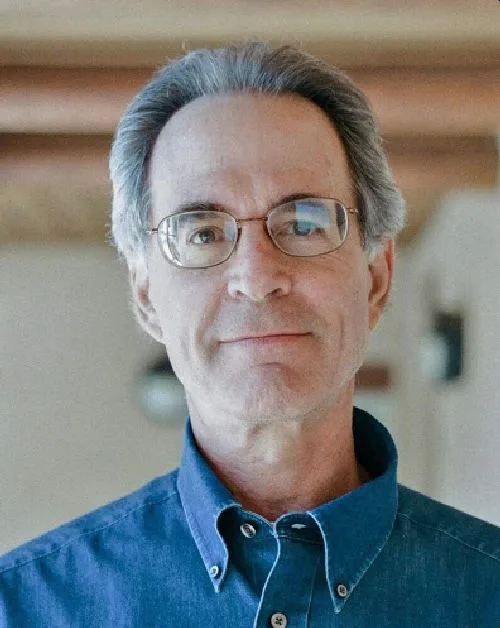
Takeaway
Over all, DMT: The Spirit Molecule by Rick Strassman is pioneering research on the psychedelic compound. No doubts, it has illuminated new pathways in the exploration of consciousness, bridging the realms of science, spirituality, and ancient wisdom.
As we reflect on his journey, several intriguing questions emerge. These queries invite us to venture further into the depths of psychedelic inquiry. Some of those questions are:
- What novel experiments could extend his groundbreaking work? The new methodologies might help us to cross thresholds, to challenge assumptions, and to set foot on the shores of uncharted frontiers of understanding.
- Dr. Strassman’s intellectual odysseys could be inked with philosophies and spiritual tenets. These intricate intertwining of scientific explorations and antiquated philosophies bore the succulent fruits of experimentation or are they merely coincidental harmonies of fate?
- This quandary beckons us to delve into the intricate dance between the tapestries of olden erudition and the voyages of scientific revelation.
The DMT journeys mentioned in the book trace back to the very roots of survival instincts sculpted by evolution. On the other hand, some reverberated harmoniously through the kaleidoscope of cultures.
Doesn’t this give us a peep in to the depths of human cognition and the enigmatic realm of perception?
In a nutshell, I feel, Dr. Strassman’s thesis inspires us to surpass the confines of tradition, and to decipher the labyrinthine weaving of consciousness. An excellent book. I highly recommend to those who are curious to know more about psychedelics and human consciousness.

